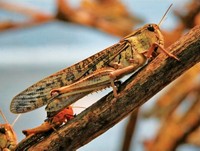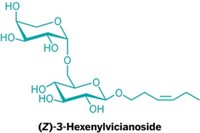Advertisement
Grab your lab coat. Let's get started
Welcome!
Welcome!
Create an account below to get 6 C&EN articles per month, receive newsletters and more - all free.
It seems this is your first time logging in online. Please enter the following information to continue.
As an ACS member you automatically get access to this site. All we need is few more details to create your reading experience.
Not you? Sign in with a different account.
Not you? Sign in with a different account.
ERROR 1
ERROR 1
ERROR 2
ERROR 2
ERROR 2
ERROR 2
ERROR 2
Password and Confirm password must match.
If you have an ACS member number, please enter it here so we can link this account to your membership. (optional)
ERROR 2
ACS values your privacy. By submitting your information, you are gaining access to C&EN and subscribing to our weekly newsletter. We use the information you provide to make your reading experience better, and we will never sell your data to third party members.
Biological Chemistry
Smoke awakens some seeds with cyanohydrins
by Bethany Halford
June 27, 2011
| A version of this story appeared in
Volume 89, Issue 26
Just as the mythical phoenix rises from its own ashes, smoke from a forest fire can stimulate the seed germination needed to bring a burned-out forest back to life. Researchers in Australia have determined that glyceronitrile, one of the thousands of compounds present in smoke from burning vegetation, may be spurring certain seeds into action (Nat. Commun., DOI: 10.1038/ncomms1356). The discovery, made by the University of Western Australia’s Gavin R. Flematti and coworkers, could help scientists and farmers awaken dormant seeds. In 2004, Flematti identified a different compound, later dubbed karrikinolide, as the chemical in smoke responsible for making some seeds sprout (C&EN, April 12, 2010, page 37). But one iconic Australian plant—Anigozanthos manglesii, commonly known as the red and green kangaroo paw—did not respond to the compound even though its seeds were known to germinate when exposed to smoke. So Flematti’s search continued until he discovered that glyceronitrile, as well as several other cyanohydrins, could awaken A. manglesii and some other smoke-sensitive seeds. Flematti believes that the cyanohydrins act by releasing cyanide, which is known to stimulate seed germination.





Join the conversation
Contact the reporter
Submit a Letter to the Editor for publication
Engage with us on Twitter